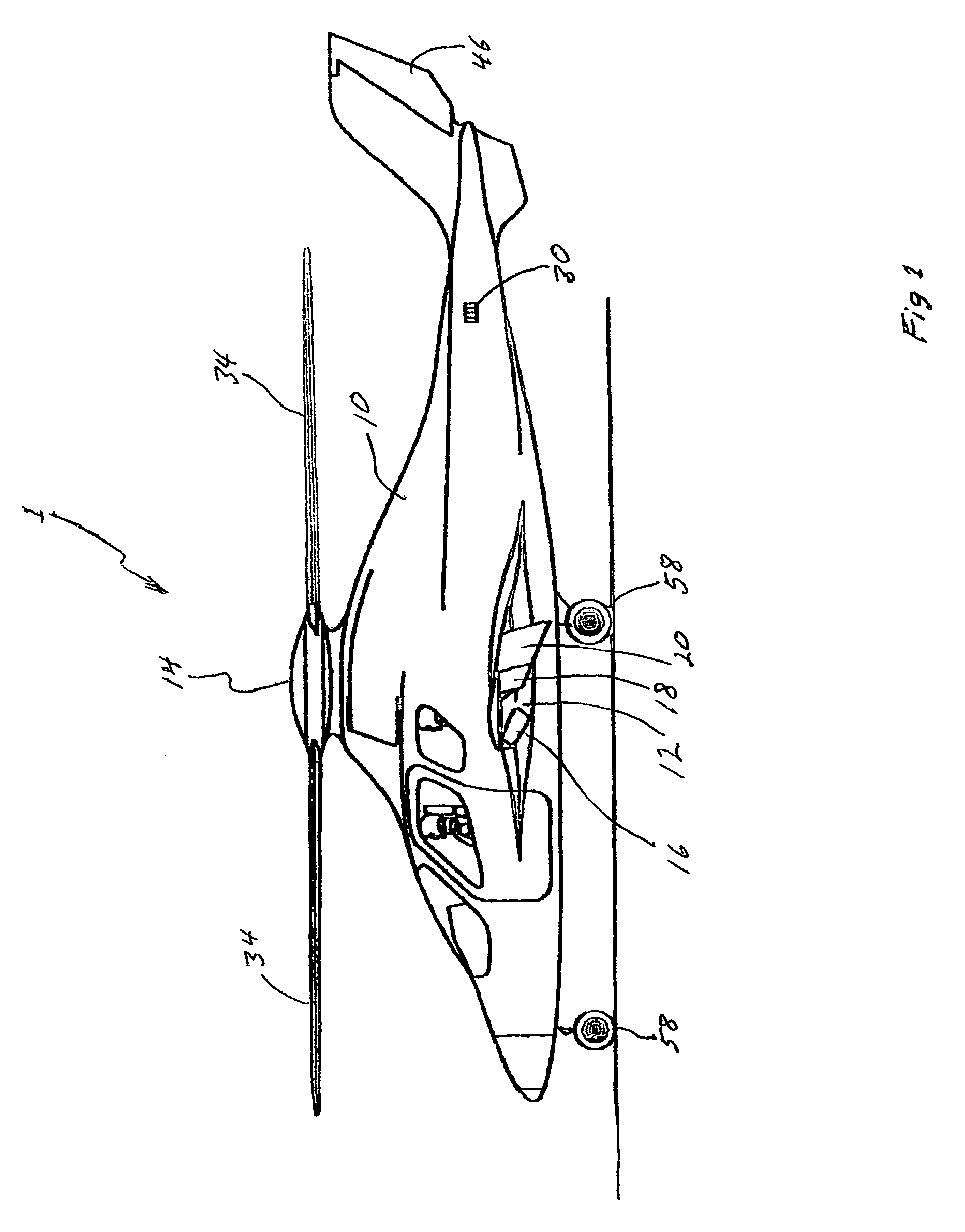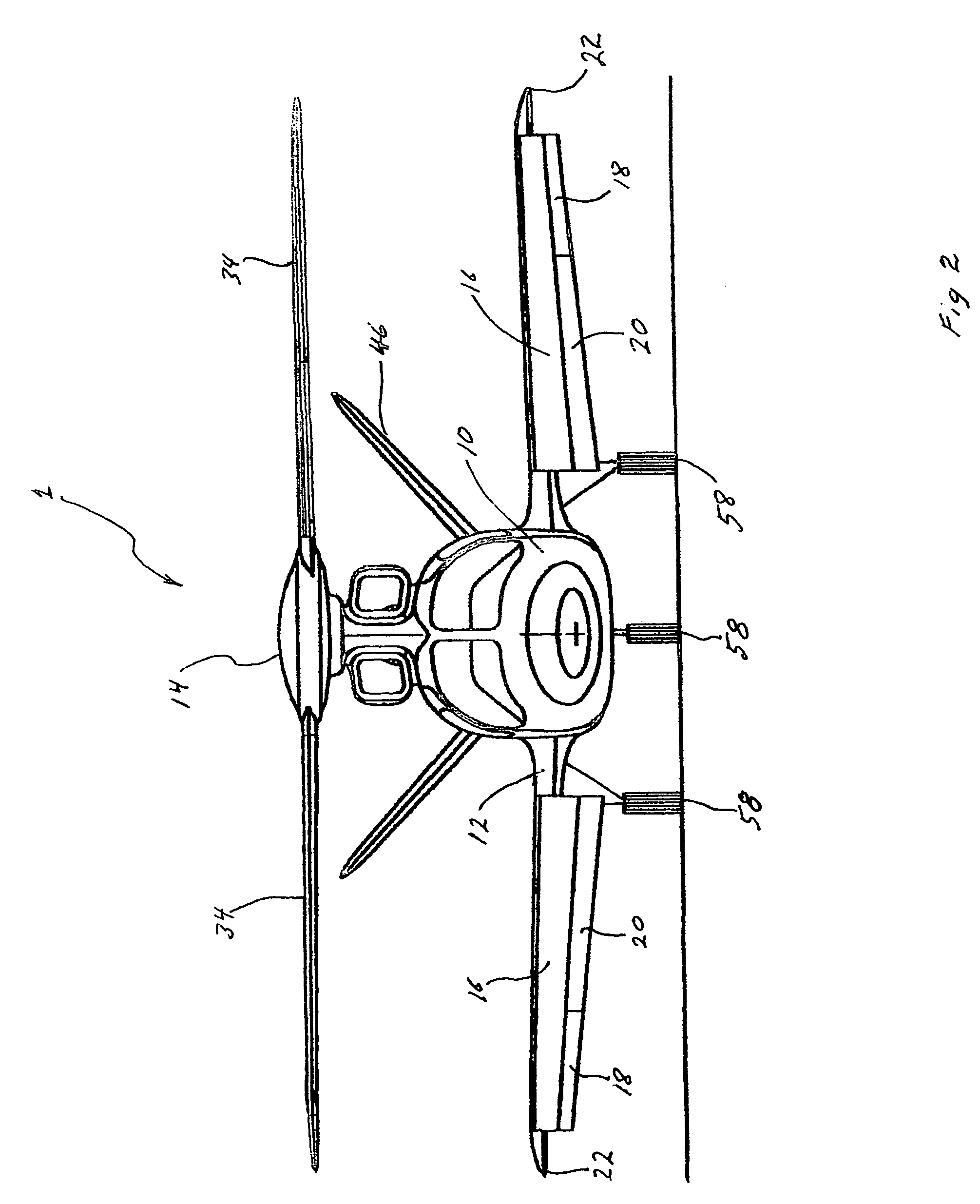Gas-powered tip-jet-driven compound VTOL aircraft
a technology of compound vertical takeoff and landing and tip-jet, which is applied in the direction of rotors, vehicles, propellers, etc., can solve the problems of poor economic operation and maintenance, high cost, and high cost of shaft driven rotors, and achieves low cost, high thrust augmentation ratio, and high speed
- Summary
- Abstract
- Description
- Claims
- Application Information
AI Technical Summary
Benefits of technology
Problems solved by technology
Method used
Image
Examples
Embodiment Construction
[0031]Tip-jet driven rotors can be termed multiple-flow thrust generators. J. V. Foa in Elements of Flight Propulsion (published by Wiley and Sons) defines a multiple-flow thrust generator as “one in which various aggregates of the working fluid undergo different cycles.” (He refers here to different thermal cycles.) Examples are: a) turbofans; b) turboprops; c) ducted engines; and d) tip-jet-driven propellers and rotors.
[0032]Of all of the various means of applying direct lift to a craft, none can compete with a well designed multiple-flow thrust generator in terms of energy applied. This is due to a little understood fact that this type of thrust generator provides “thrust-augmentation.” Foa defines thrust-augmentation as “an increase in thrust at no extra cost in energy input.” He remarks that a jet-driven propeller provides one of the most striking illustrations of the thrust-augmentation.
[0033]By way of example, a quarter-scale model (rotor diameter of 5.65 feet) of a tip-jet r...
PUM
 Login to View More
Login to View More Abstract
Description
Claims
Application Information
 Login to View More
Login to View More - R&D
- Intellectual Property
- Life Sciences
- Materials
- Tech Scout
- Unparalleled Data Quality
- Higher Quality Content
- 60% Fewer Hallucinations
Browse by: Latest US Patents, China's latest patents, Technical Efficacy Thesaurus, Application Domain, Technology Topic, Popular Technical Reports.
© 2025 PatSnap. All rights reserved.Legal|Privacy policy|Modern Slavery Act Transparency Statement|Sitemap|About US| Contact US: help@patsnap.com



